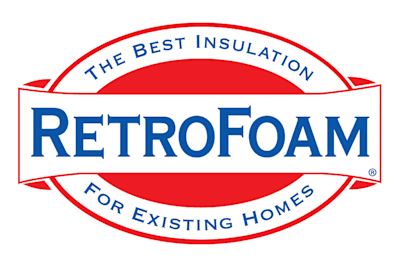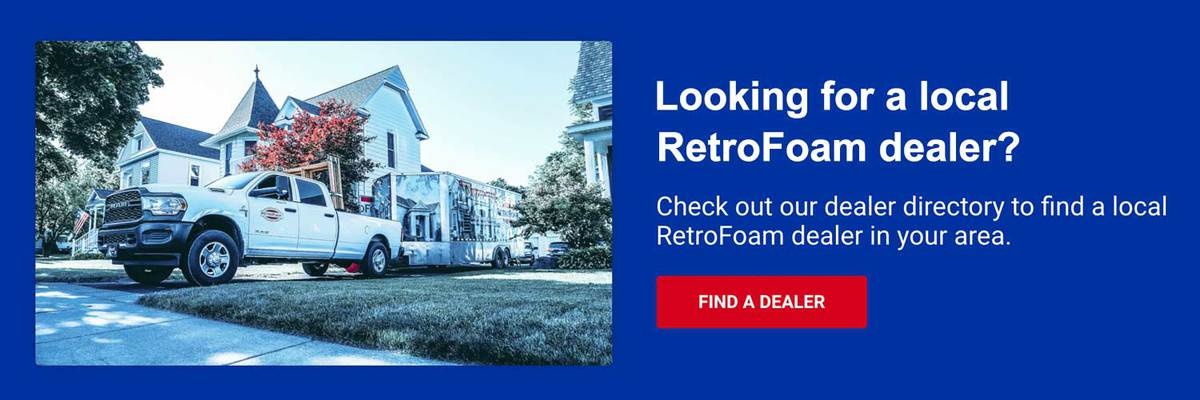Dispelling Energy-Saving Myths: Foam Insulation Facts You Should Know
spray foam insulation | RetroFoam insulation | energy efficiency | foam university


When it comes to energy efficiency, misinformation spreads faster than a house loses heat through unsealed walls.
From wild internet theories to good ol’ word-of-mouth myths, it’s easy to get caught up in outdated or flat-out wrong beliefs, especially about foam insulation and saving energy at home.
In this article, we’re busting some of the most common energy-saving myths, particularly the ones that keep popping up about foam insulation.
Myth #1: Foam Insulation Only Works for New Homes
It’s true that spray foam insulation is commonly used in new builds, but that doesn’t mean foam insulation is off-limits for existing homes.
There are different types of foam insulation; injection foam (like RetroFoam) is specifically designed for retrofit projects. That means you don’t have to tear your house apart to enjoy the benefits of energy efficiency.
The Truth
- Spray foam and injection foam can both be used in existing homes, pole barns, commercial buildings, and retrofit projects.
- You can absolutely upgrade your old home with foam insulation – no bulldozer required.
Myth #2: Foam Insulation Shrinks Over Time
You may have heard horror stories about foam turning to dust or pulling away from walls.
But not all foam insulation is built the same.
The Truth
- RetroFoam insulation has a built-in 2 percent shrinkage rate, and that’s intentional.
- A small amount of shrinkage allows the foam to shift naturally with your home as it settles without compromising the air seal.
The key? Ask your contractor what kind of foam they’re using and whether shrinkage is part of the design or a flaw in the product.
Myth #3: Energy-Efficient Upgrades Are Too Expensive
Sure, foam insulation might cost more upfront compared to traditional materials, but that sticker shock doesn’t tell the full story.
The Truth
- Foam insulation reduces your monthly energy bills by lowering heating and cooling costs.
- Your HVAC system runs less frequently, resulting in less wear and tear and greater long-term savings.
- Over time, many energy-efficient upgrades pay for themselves, making them a wise investment, not just an expense.
Myth #4: New Homes Are Always Energy Efficient
New construction doesn’t always mean energy smart.
It’s not uncommon for insulation to be one of the first things cut when budgets get tight, especially when the marble countertops and luxury finishes start adding up.
The Truth
- Many new homes use basic fiberglass batts or minimal insulation, leaving gaps for air to leak in and out.
- Even a brand-new HVAC system won’t work efficiently if your home isn’t properly sealed.
Just because it’s new doesn’t mean it’s sealed tight or built to be comfortable year-round.
Myth #5: Energy Efficiency Only Matters in Cold Climates
This is one of the biggest energy-saving myths out there.
People often associate energy efficiency with heating homes in winter, but what about summer comfort?
The Truth
- In warm climates, your air conditioner works just as hard as your furnace does in colder areas.
- Air sealing with foam insulation is just as important for keeping cool air inside as it is for keeping cold air out.
- Whether you’re in the Texas heat or Michigan chill, you need a well-sealed building envelope for real energy savings.
Myth #6: All Foam Insulation Performs Equally
Spoiler alert: it doesn’t.
From canned foam you pick up at the hardware store to professionally installed spray or injection foam, there’s a huge difference in quality, performance, and longevity.
The Truth
- Not all foam products are created equal.
- High-quality foam insulation is formulated for long-term performance, durability, and air sealing.
- Ensure your contractor clearly explains the type of foam they use, its performance characteristics, and the warranty that backs it up.
Continue Your Foam Insulation Journey
If you’re curious about what else you’ve heard and whether it’s fact or fluff, dive into the Learning Center on our website. We’ve got videos, articles, and plenty of myth-busting insights waiting for you.
If you’re ready to talk to a pro, check out our Dealer Finder.
Key Points:
- Foam insulation isn’t just for new homes. Retrofit options, such as injection foam, are ideal for existing homes.
- RetroFoam’s shrinkage rate is minimal and purposeful, so your air seal stays intact even as your home settles.
- Energy-efficient upgrades can pay for themselves over time by reducing monthly energy bills and extending the lifespan of your HVAC system.
- New homes aren’t always energy efficient, especially if corners are cut on insulation.
- Energy efficiency matters in all climates, and air sealing is essential for both hot and cold weather comfort.
- Not all foam insulation is the same, so be aware of what you’re getting and ensure it’s installed by professionals.
Related Articles
How to Improve Heat Pump Performance with Foam Insulation
Energy Efficiency Grants for Homeowners: How to Find and Apply for Free Assistance
Harnessing the Sun and Sealing the Home: The Dynamic Duo of Solar Power and Foam Insulation
About Amanda Emery
Amanda previously has worked as a breaking news and crime reporter, TV news producer, and editor. As a journalist, she has won several awards from The Society of Professional Journalists - Detroit Chapter and the Michigan Press Association. Amanda uses her experience as a journalist to write content that will help educate homeowners on foam insulation benefits. When Amanda isn’t writing, she’s spending time with her husband Chris, daughter Lilith-Maeve, and rescued huskies Danger and Wendigo. She also loves knitting, making art, and cooking.



